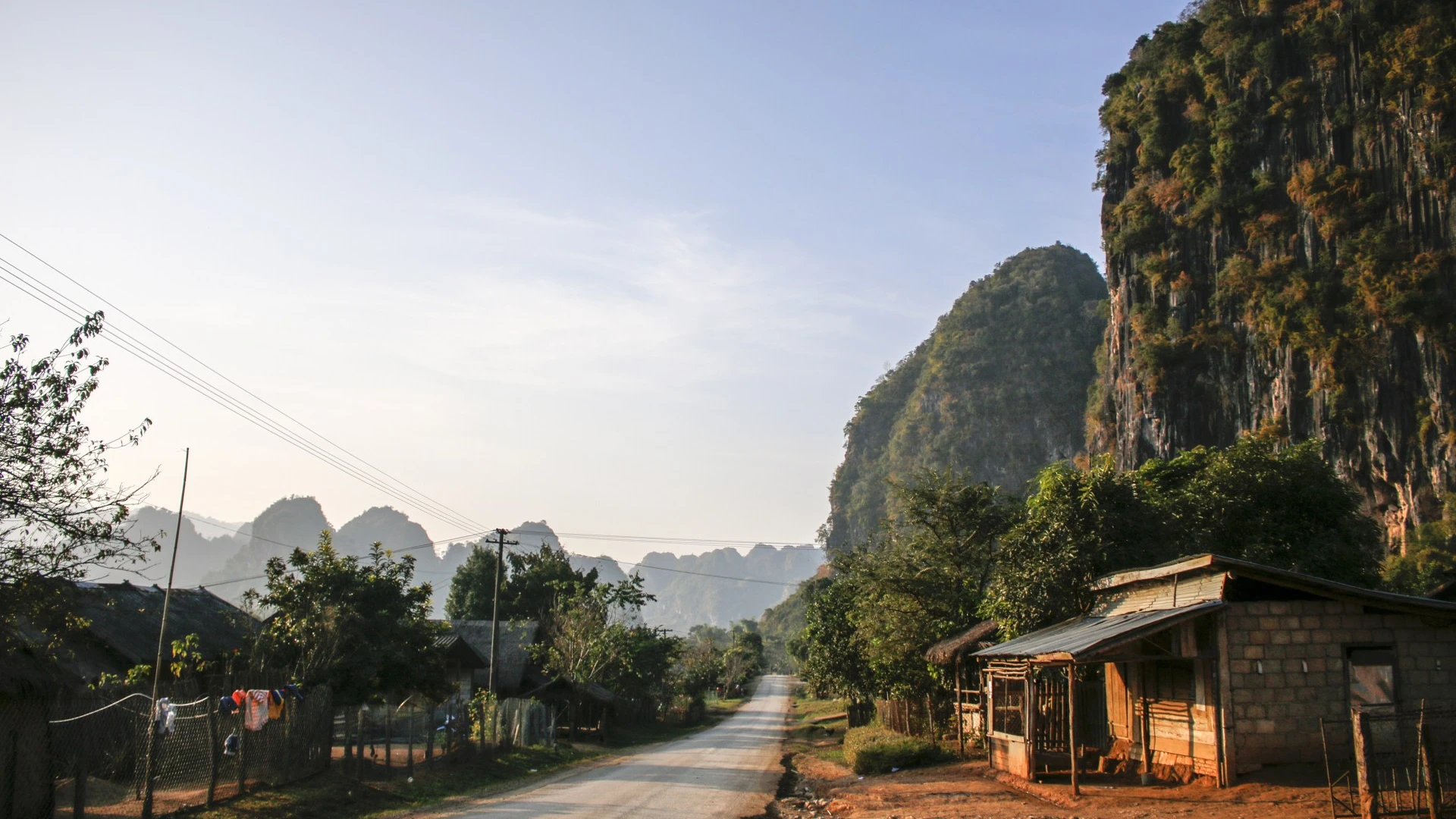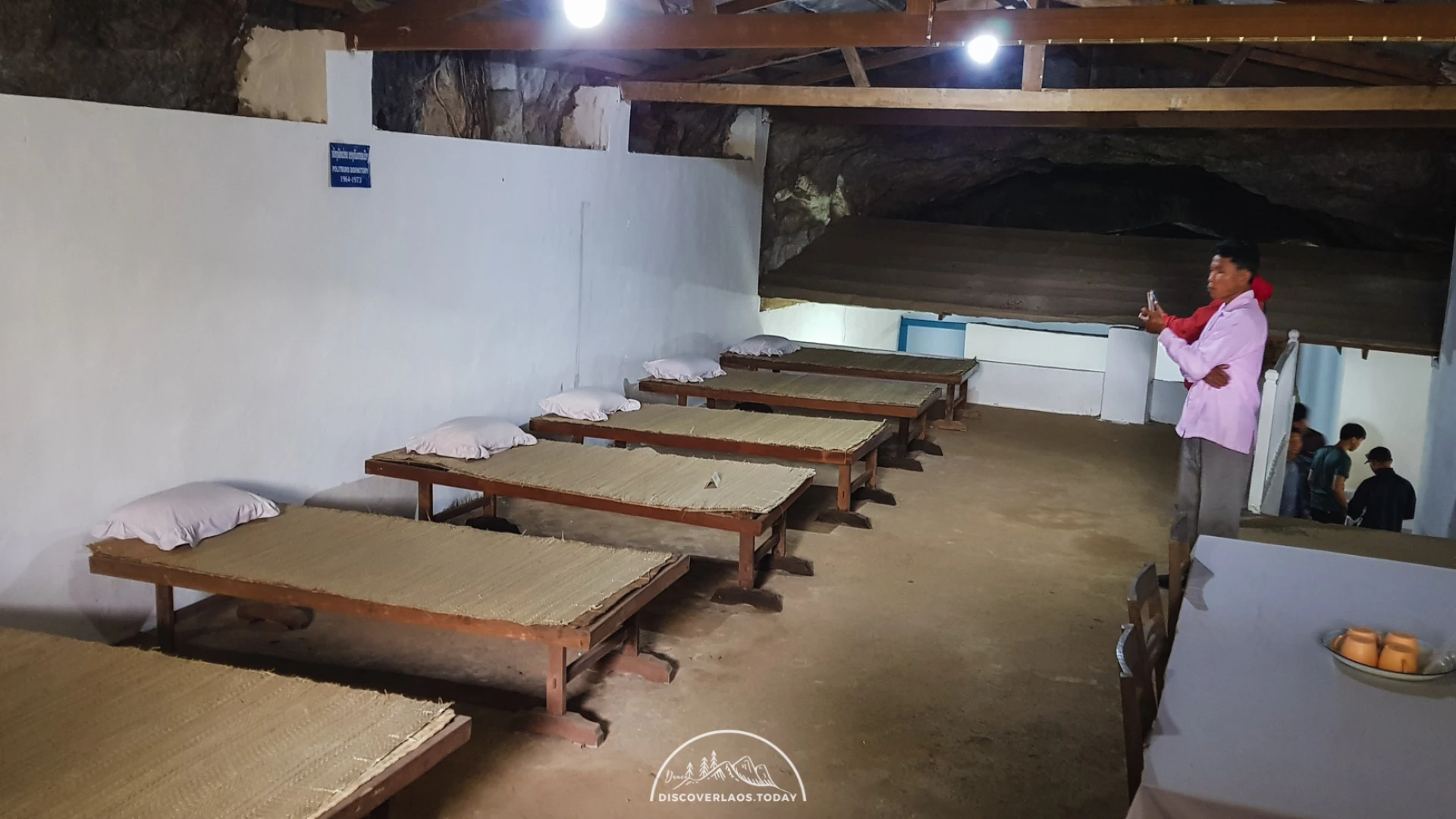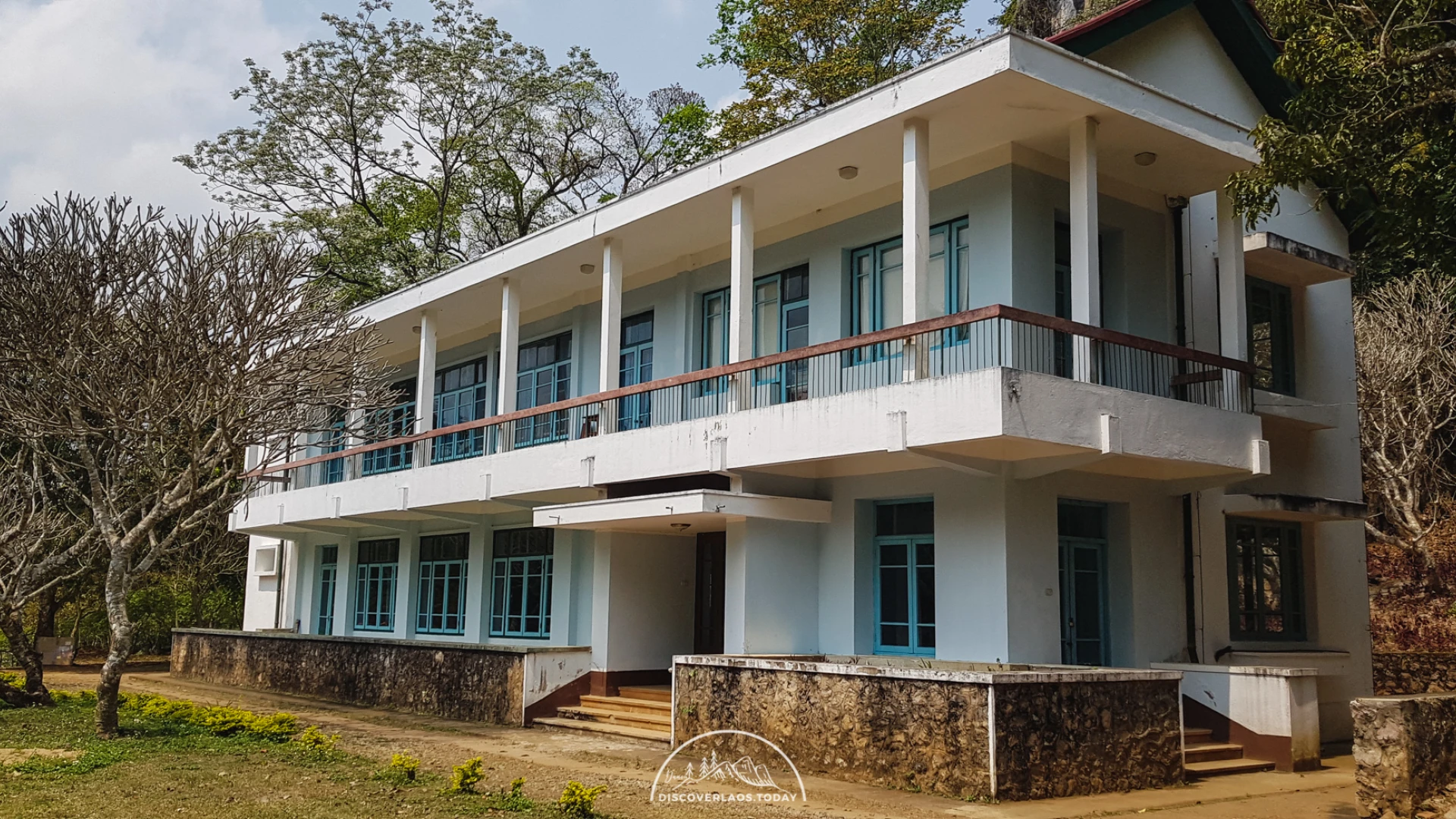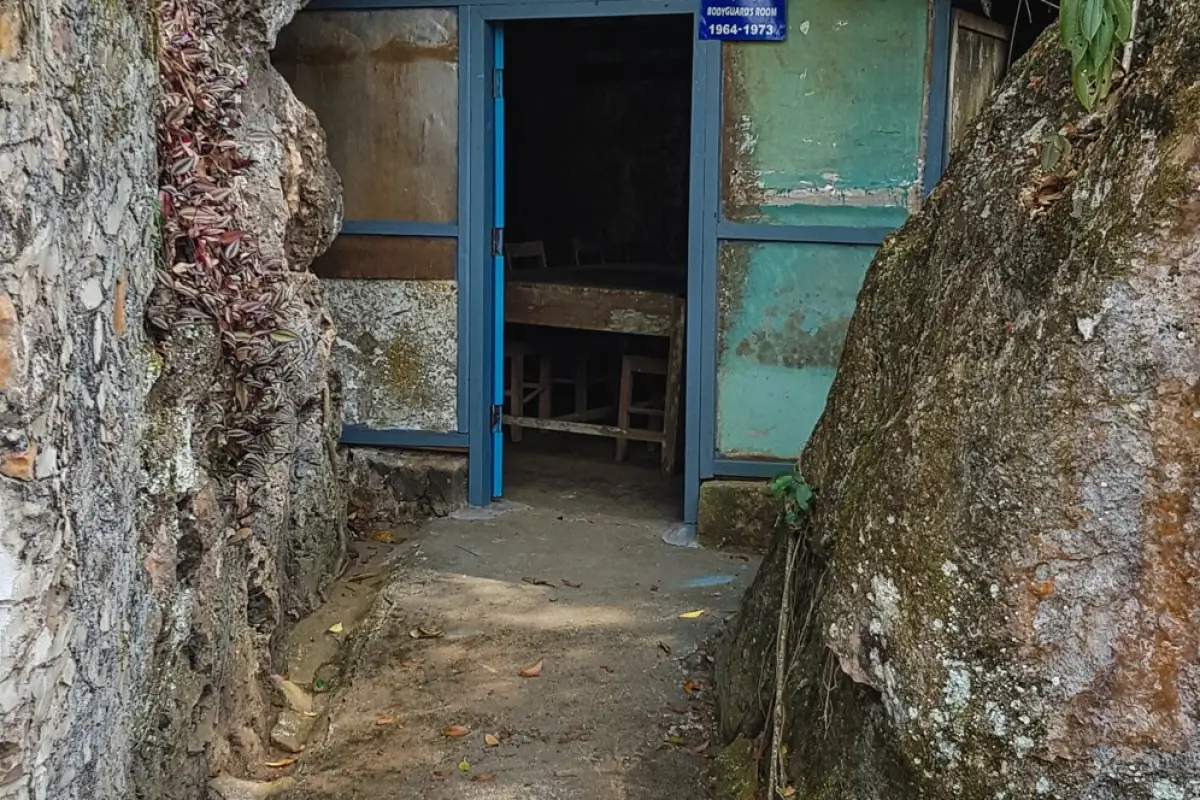The Viengxay Caves, also called the “Hidden City”, is a network of caves used by the Pathet Lao (the Lao revolutionary movement) during the Secret War.
The cave of the General-Secretary of the Lao Communist Party, Kaysone Phomvihane, was the central meeting area for the Politburo. Inside, leaders of the revolution discussed political, military and ideological plans for the future Lao PDR. Kaysone’s wife and children lived with him in the cave throughout the period.
Prince Souphanouvong also stayed in a cave during the conflict. After the war, Souphannouvong used his civil engineering background to design and build a house outside the caves in 1973. You can find a monument to his eldest son, who was assassinated by an anti-Pathet Lao agent in 1967, in his garden.
In addition, the caves of other important leaders are on display. Nouhak Phoumsavan was the Minster of Finance and the Economy in the Pathet Lao government and went on to become President of the Lao PDR. His jeep, a gift from the Soviet Union, is still parked in the garage. Khamtay Siphandone was the Politburo Member responsible for the military and defence, and later was the President of Lao PDR. His cave connects to a number of military caves, which may have been used as barracks during bombing raids. Phoumi Vongvichid was the Minister of Education and Public Health in the revolutionary government. Interestingly, the cave of Sithon Kommadam, the Lao Theung representative who was believed to be immune to bullets, was also preserved.
Other than the leaders' caves, there is the huge Xanglot Cave, which was a central area where large rallies and meetings were held. The cave was also a space for entertainment - it was the venue for musical and dance performances by local and foreign artists. There is also the Artillery Cave, which was a military installation. Artillery was manned by soldiers around the clock in order to return fire during US bombing raids. The panoramic view from this cave, set halfway up the cliffside, gives an idea of the area this artillery position covered. Similar artillery installations were positioned on surrounding peaks.
The nearby Viengxay Caves Visitor Centre contains displays about the history of the conflict and provides tourist information for the area. There, you can hire a bicycle for touring the caves or the town or attend audio tours of the caves in both English and Lao. It is opened daily from 08:00 to 12:00 and 13:30 to 16:30.
































